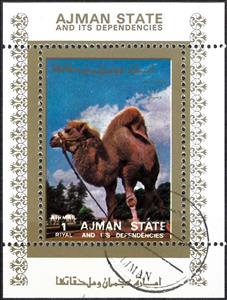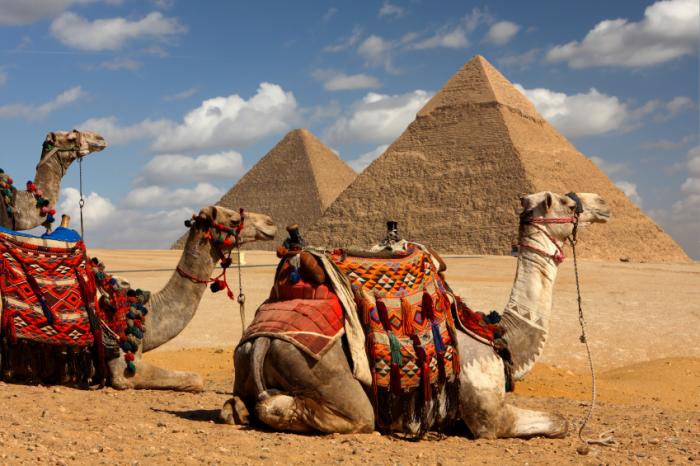Souvenir Sheet: Arabian camel (Camelus dromedarius) (Cinderellas 1973)
Arabian camel (Camelus dromedarius) (Cinderellas 1973)
31 March (Cinderellas ) within release Ajman State goes into circulation Souvenir Sheet Arabian camel (Camelus dromedarius) face value 1 United Arab Emirates riyal
| Souvenir Sheet Arabian camel (Camelus dromedarius) in catalogues | |
|---|---|
| Michel: | Mi: AJ 2844AwBL |
Souvenir Sheet is vertical format.
Also in the issue Ajman State:
- Souvenir Sheet - Wild Boar (Sus scrofa) face value 1;
- Souvenir Sheet - Leopard (Panthera pardus) face value 1;
- Souvenir Sheet - Animal face value 1;
- Souvenir Sheet - Lion (Panthera leo) face value 1;
- Souvenir Sheet - Animal face value 1;
- Souvenir Sheet - Arabian camel (Camelus dromedarius) face value 1;
- Souvenir Sheet - Monkeys face value 1;
- Souvenir Sheet - Animal face value 1;
- Souvenir Sheet - Tiger (Panthera tigris) face value 1;
- Souvenir Sheet - Llama (Lama glama) face value 1;
- Souvenir Sheet - Raccoon (Procyon lotor) face value 1;
- Souvenir Sheet - African Elephant (Loxodonta africana) face value 1;
- Souvenir Sheet - Animal face value 1;
- Souvenir Sheet - Roan Antelope (Hippotragus equinus) face value 1;
- Souvenir Sheet - Monkeys face value 1;
- Souvenir Sheet - Eurasian Otter (Lutra lutra) face value 1;
- Souvenir Sheet - Bisons face value 1;
- Souvenir Sheet - Animal face value 1;
- Souvenir Sheet - Sea Lion face value 1;
- Souvenir Sheet - Night Mammal face value 1;
- Souvenir Sheet - Kangaroo (Macropus spp.) face value 1;
- Souvenir Sheet - Monkeys face value 1;
- Souvenir Sheet - Monitor Lizard (Varanus spp.) face value 1;
- Souvenir Sheet - Animal face value 1;
- Souvenir Sheet - Giant Panda (Ailuropoda melanoleuca) face value 1;
- Souvenir Sheet - Leopard (Panthera pardus) face value 1;
- Souvenir Sheet - African Elephant (Loxodonta africana) face value 1;
- Souvenir Sheet - Antilope face value 1;
- Souvenir Sheet - Orangutan (Pongo spp.) face value 1;
Souvenir Sheet Arabian camel (Camelus dromedarius) it reflects the thematic directions:
Animals are multicellular, eukaryotic organisms of the kingdom Animalia (also called Metazoa). All animals are motile, meaning they can move spontaneously and independently, at some point in their lives. Their body plan eventually becomes fixed as they develop, although some undergo a process of metamorphosis later on in their lives. All animals are heterotrophs: they must ingest other organisms or their products for sustenance.
A camel (from Latin: camelus and Greek: κάμηλος (kamēlos) from Ancient Semitic: gāmāl) is an even-toed ungulate in the genus Camelus that bears distinctive fatty deposits known as "humps" on its back. Camels have long been domesticated and, as livestock, they provide food (camel milk and meat) and textiles (fiber and felt from camel hair). Camels are working animals especially suited to their desert habitat and are a vital means of transport for passengers and cargo. There are three surviving species of camel. The one-humped dromedary makes up 94% of the world's camel population, and the two-humped Bactrian camel makes up 6%. The wild Bactrian camel is a separate species and is now critically endangered.


